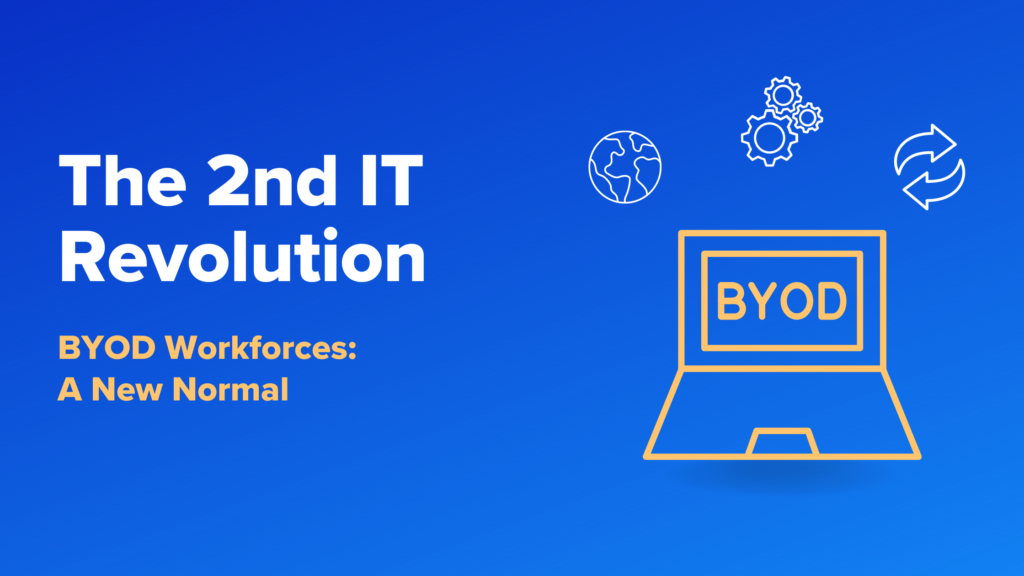“We thought that the Covid remote-work transformation was hard…”
An IT leader at a noted fin-tech company told me this in a conversation we had recently, and it’s stuck with me since I first heard it. He was referring to the 2nd transformative IT process that his company has gone through in less than three years, and they’re not alone…
Most companies experienced the COVID-19 lockdown as a fire drill. Everybody had to quickly move out of the office and start working from home. IT teams were not prepared for such an immense transformational change to take place in such a rapid and unexpected way, and many teams struggled to support the organizational needs of a fully remote workforce.
One of the key challenges was the concept of “fog of war,” where strategic leaders didn’t really have an idea how long the pandemic would keep us out of the office. Consequently, most organizations’ responses were more of a sequence of short-term projects and responses rather than the inception of new long-term strategies, because we assumed things were going to get back to how they used to be in a matter of months. Little did we know then that we were facing down a “new normal” of work.
Changing Patterns of IT Management
On the IT side of things, the long-lived way of managing laptops for employees has been largely unchanged throughout this shift, with a few minor adjustments. In the pre-COVID world people who joined a company received a newly imaged computer from IT, and would hop back to IT if they had any issues with it. Post-COVID the same process has been followed, but instead of IT being able to manage all these tasks in-person they instead had to ship the computer to the newly-hired employee and support it remotely. While ok as a short-term solution, it had major long-term impacts on cost and business agility.
Now, more than two years since the COVID-19 pandemic began, we are facing a new transformational change. Turns out employees don’t want to go back to the office full-time. Moreover, many companies don’t want them (or can’t have them) back in the office in accordance with a traditional workweek. One of the reasons for that is that employees have grown to appreciate the flexibility of working from home, and have gladly given up on long commutes and logistical concerns. On the employer side, leaders have fallen in love with hiring talent globally, and a plethora of organizations have become remote by definition. Many companies have also seen this as an opportunity to cut down on their facilities costs.
Embracing the “New Normal”
As a result, companies are realizing that we are moving to a new era of indefinite hybrid/remote work. This has had a huge impact on organizational structures and cultures, but also on how IT sees the future of employee devices and device management. Existing processes are just not sustainable. It’s too slow and expensive to maintain employee devices the old-fashioned way in a remote-work climate.
Let’s go back to the example of a company hiring a new employee. They need to get this employee a device so that this employee can start working ASAP. The device needs to be sent to the office, imaged by the IT team, and loaded with all required software. Then the device needs to be shipped to the employee’s house. If an employee gets the device, tries to use an app during the setup and gets an error, they then need to contact the IT team to get remote assistance. If there are 5 people in the IT team and 2,000 employees, there’s going to be a pretty long waiting time for delivery of new devices and for technical issue resolution. This is not a sustainable solution.
Rethinking Device Management
Today leading companies are trying to take a step back and rethink the way they do IT management in a remote-first world. Instead of viewing this disruption as a short term hurdle to be solved IT leaders are instead embracing the “new normal” and devising remote-first solutions for their BYOD workforces as long-term strategies.
We’ve seen a few different approaches to device management emerge. Let’s break down the three main lanes:
- Remote Device Management: The “as-is approach” that many companies have defaulted to. Recently we’ve started to see more and more companies moving away from this model.
- BYOD: This model has been around forever and is currently picking up traction as a solution for remote-first employees.
- Self-Managed Devices: This novel approach to device management has different flavors, but in essence means that the company owns the devices while the employee manages and uses them for personal, acceptable computing tasks. There are obviously upsides and downsides to this approach, but it is certainly picking up steam.
Stay tuned for future blogs, in which I will expand on each of the 3 approaches in the context of a long-term, remote-first strategy and talk through some tips to help you understand whether one of these approaches is appropriate for your organization.



